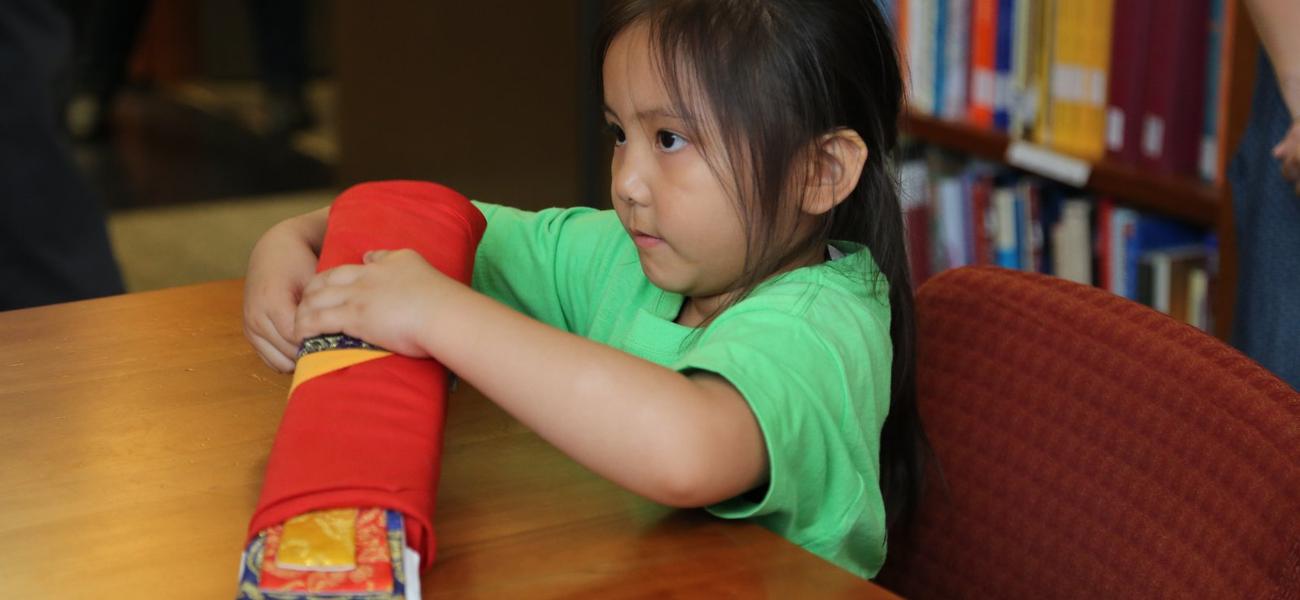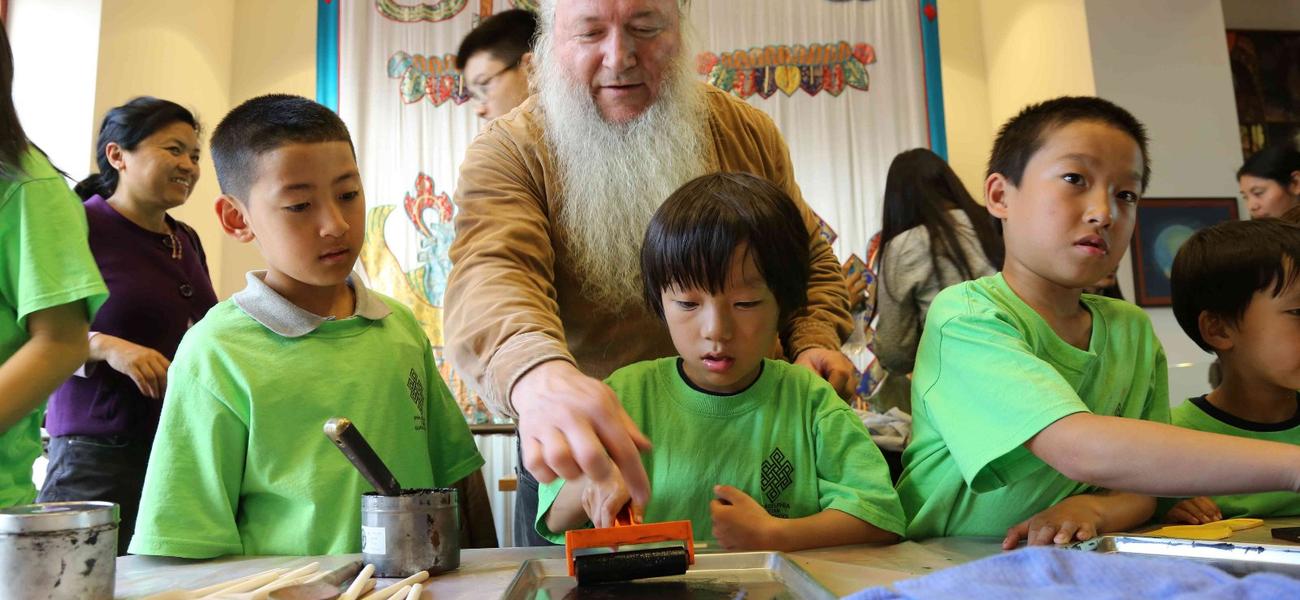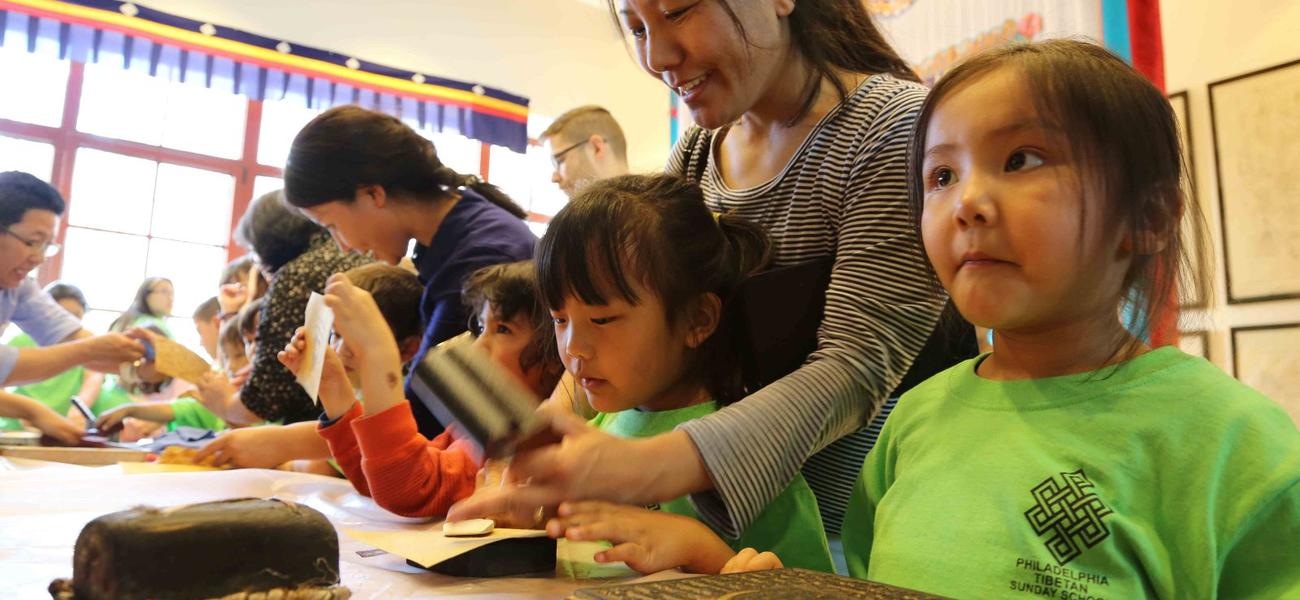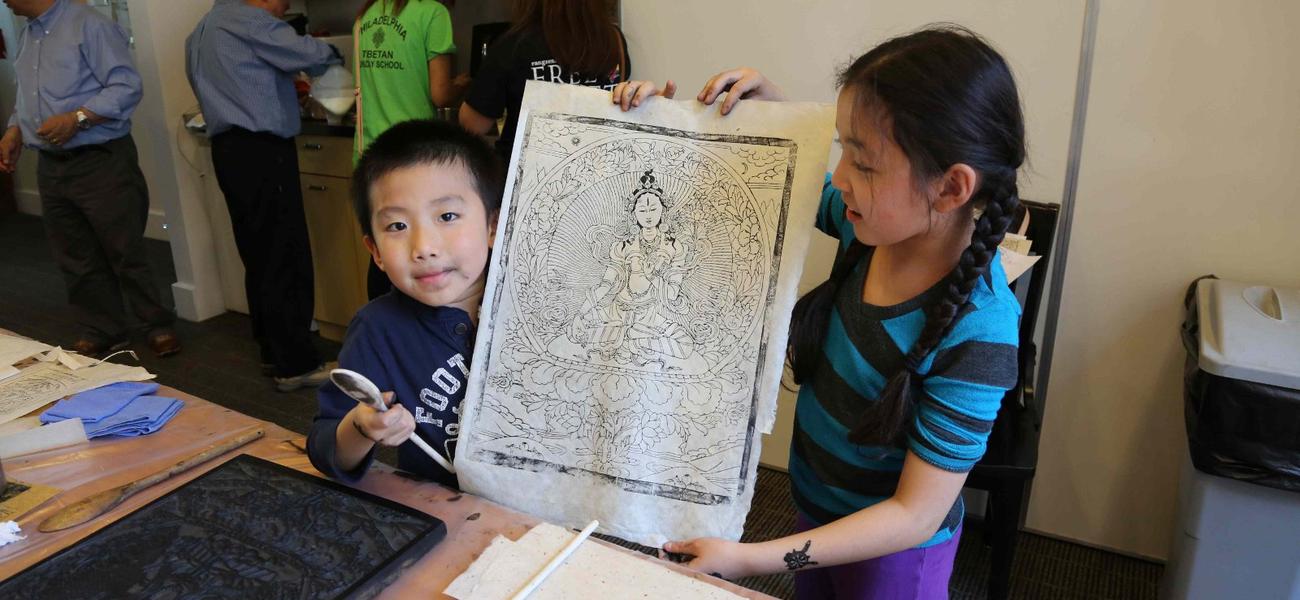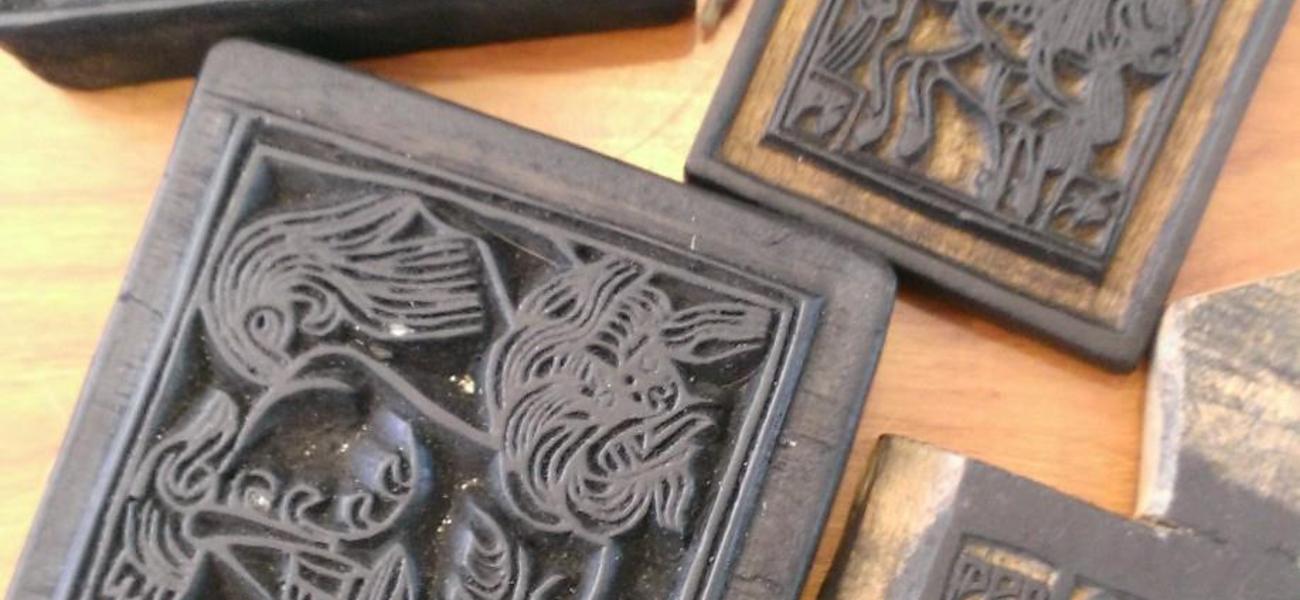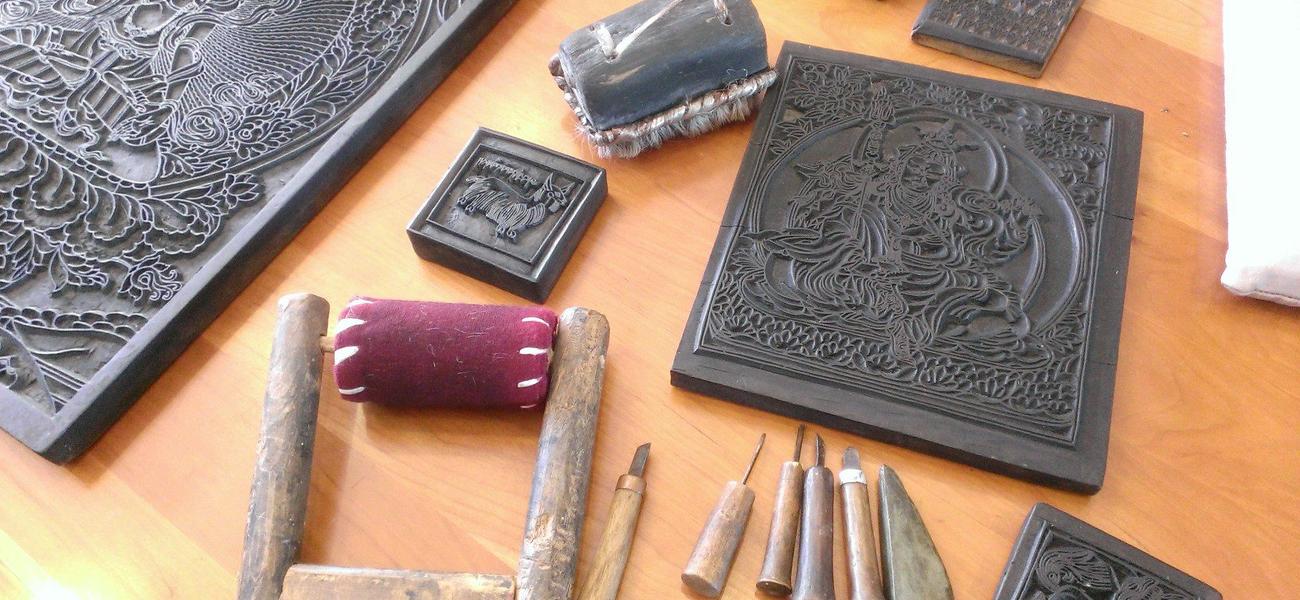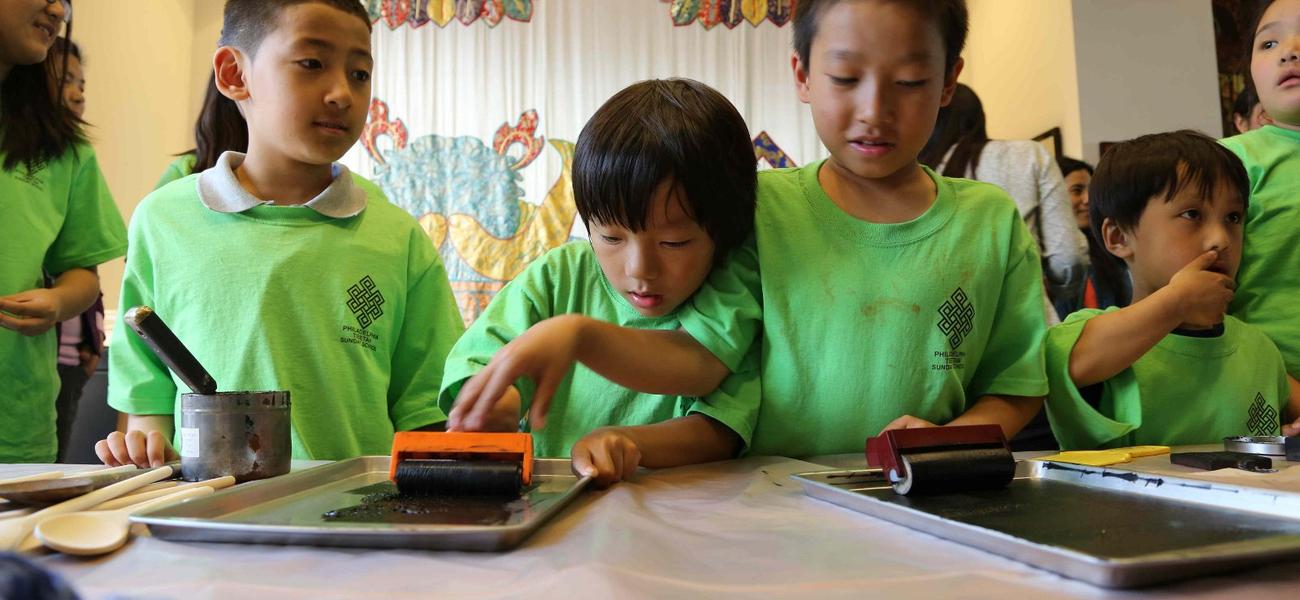“When you have a clean sheet of paper, you can write your culture. You can write your future,” Jim Canary tells an animated group of Tibetan students visiting from the Philadelphia Tibetan Sunday School on a late April morning this year.
Trace Foundation's library is packed wall-to-wall with kids in lime green shirts decorated with apalbe, endless knots—one of the eight auspicious symbols seen on the walls of almost every Tibetan monastery and home. With their parents, they've traveled ninety-six miles to join us for a Tibetan woodcut-printing workshop, and as they enter, excited Tashi deleks resound from every corner of Trace Foundation.
The front room of the library is filled with elaborate Tibetan wood blocks. Some, as small as rubber stamps, are intricately carved with the dharma-cakra (dharma wheel), gserna (golden fish), dhoong (right-coiled conch shell), and the other auspicious symbols. Other, much larger blocks, colored over the years in remarkable waves of black ink, depict the Buddha among line after line of painstakingly carved Tibetan Ü-chen script. Brushes, chisels, a baren, and a roller are also on display here.
In front of the Reading Room next door, Jim Canary, cofounder of Paper Road/Tibet and the head of conservation of the Lilly Library at Indiana University, explains the traditional process of paper making in Tibet, a process he also described in detail at our Paper & Ink event in July.
After Jim finishes his talk on the paper-making process, he begins talking about the beautiful wood blocks laid out in the front room. Carved from birch or walnut (woods hard enough to prevent splintering), these blocks are the product of meticulous craftsmanship. Tibetan letters can be very fine and small, so it requires a special hand to create these wood blocks without chipping off parts of the letters. That's why, when the artists are not carving, they store the wood on oiled cloth to keep it supple and primed for carving.
“Just think about it...” he says. “For every book, you need a block made for every page that you're printing. So if you're printing the Kangyur [part of the Tibetan Buddhist canon], you're printing one hundred and eight volumes of text. And you need that many woodblocks cut.”
The last step is the printing itself, something the children will have a chance to try their hands at in a few moments. Jim shows a video of a printing house where the Kangyur (108 volumes) and Tengyur (224 volumes) are being printed. The first step is to dampen the paper. After this, they stack the damp paper among sheets of dry paper and let that sit overnight. In this way, the paper absorbs the ink easily. To even out the moisture, the paper is then stored overnight between wooden boards. Finally, after the printing, the paper is lined up on a long table and the pages placed in the correct order.
And that, he says, is how Tibetan books are made.
The air fills with the heady smell of ink as the kids rumble into the front room now, where a long table, covered in a plastic sheet, is littered with small pots of black ink, putty knives, kitchen spoons, rollers, cookie sheets, wood blocks, and Tibetan paper.
Here, Jim shows the kids how it's done: Distributing ink on the roller on the cookie sheet, he coats the face of a small wood block with ink. Then placing a piece of parchment over the face, he methodically rubs the back of the paper with the kitchen spoon. Line by line, patch by patch, the ink bleeds through the paper, and when he's satisfied he's printed the woodcut evenly, he peels the paper off and shows it to the kids and parents.
Now it's the kids' turn. They storm around the table, eager to produce as many prints as possible. They start small, with the eight auspicious symbols, but by the end, they're producing larger masterpieces from one of the larger woodcuts.
As the little ones wash up and head outside for cookies and juice, the teenagers discover that the woodcuts work just as well on their skin. By the time they leave, their hands and forearms are covered with intricate, and beautiful designs.
“I suppose it was only a matter of time before they figured that out,” Jim laughs.
Founded in 2002, the Tibetan Association of Philadelphia is a nonprofit organization of Tibetans in the State of Pennsylvania that strives to promote the unique Tibetan cultural, tradition, and language within the Tibetan community. Its 150 members, ranging in age from one to eighty-two years old, meet twice a month and are responsible for organizing an annual Tibet Fest, one of the most visited festivals of ethnic community groups in Philadelphia.
“Our Tibetan community is a wonderful group of people,” says Annette Seidenglanz, a visual artist who has been integral in establishing the Sunday School. “It is remarkable to see their dedication to their children enacted with so much love and respect.”
Trace Foundation was thrilled to host the Philadelphia Tibetan Sunday School as part of our public programming. If you are interested in arranging a group visit with your organization or school, please e-mail us at info@latse.org

